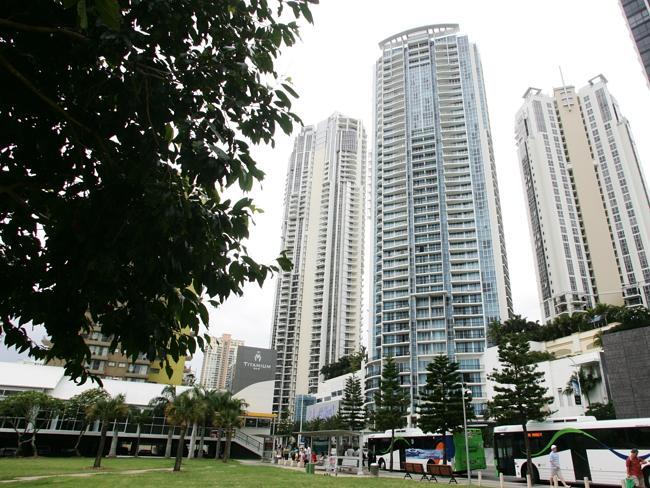Take a look back at some of the Gold Coast's most iconic hotels and motels
IT'S been nearly 25 years since the Gold Coast's first major hotel disappeared from the skyline but memories of Lennons Hotel remain strong.

Lifestyle
Don't miss out on the headlines from Lifestyle. Followed categories will be added to My News.
It's been nearly 25 years since the Gold Coast's first major hotel disappeared from the skyline but memories of Lennons Hotel remain strong.
Significant development began on the Coast in the wake of World War II, which had brought many servicemen to the sandy beaches.
Broadbeach had just five recorded residents by the end of the 1940s but soon came to the attention of the Lennons hotel group which in 1953 bought land formerly occupied by a sand mine.
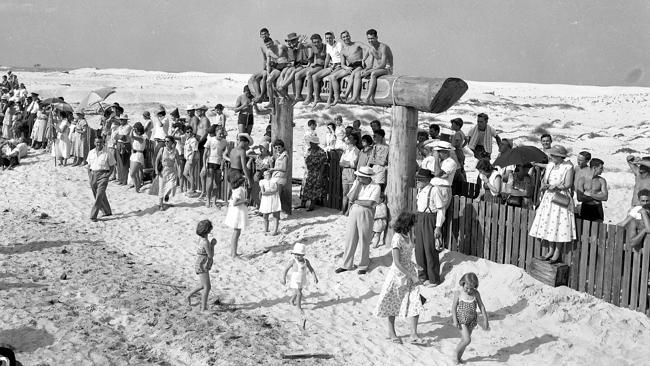
By that time more than 300 people called Broadbeach home and witnessed the creation of the hotel that occupied the site of what is now the Oasis shopping centre.
It was designed by Dr Karl Langar and featured several poolside attractions, including a fountain created by Brisbane sculptor Len Shillam.
The hotel was just five storeys high but immediately took the crown as the Coast's tallest building when it was completed in 1956. It was opened on December 17.
It dominated the local landscape, being the lone structure surrounded by sand.
Later that year it was followed by the Florida Gardens housing estate.
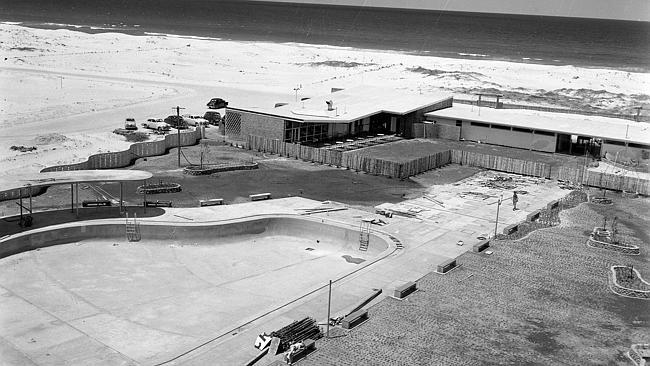
A filtration system was required to maintain the hotel's vast pool and a 1.5m cast terrazzo sculpture of a seal and its pup was created to provide a housing.
Despite its iconic status the hotel was not considered a financial success and it eventually closed its doors and was demolished in 1987.
The Oasis opened two years later.

The seal sculpture survived the hotel's destruction and was bought by the Sakura Japanese gardens restaurant which installed it on a jetty. It later disappeared and was eventually found at the bottom of a Broadbeach canal and retrieved through the efforts of Conrad Jupiters Casino and Bond University.
The statue was restored through sandblasting and donated to the National Trust of Queensland, which placed it at the entrance of the Gold Coast Convention Centre, not far from its first home.

Paradise founded, then lost and found again: Surfers Paradise Hotel
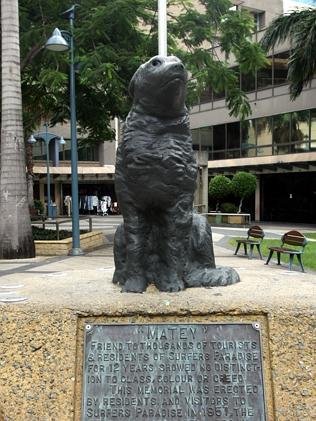
The Glitter Strip had a little extra sparkle this year as it celebrated 80 years of Surfers Paradise.
The suburb was originally known as Elston in the 1920s and 1930s when Brisbane hotelier James Freeman Cavill, better known as Jim Cavill, arrived in the region and bought land.
He developed the site that would become his world-famous Surfers Paradise Hotel in 1923 near the closed Main Beach Hotel.
Surfers Paradise Hotel had 16 bedrooms and opened in 1925, soon after the construction of the Jubilee Bridge connecting Elston to Southport.
The iconic name began to spread, with Mr Cavill founding the Surfers Paradise Life Saving Club and Surfers Paradise Progress Association in 1929.
Bowing to local pressure, the town council approved a name change and, on December 1, 1933, Elston was officially renamed Surfers Paradise.
The Town of South Coast was officially renamed Town of Gold Coast on October 23, 1958 and City of Gold Coast nine months later.
Mr Cavill's original timber hotel was destroyed by fire in 1936 and replaced by a modern brick complex.
A zoo was also built nearby.
A popular sight outside the hotel was Matey, a small dog that was known to accompany its patrons home before returning each day.

Surfers Paradise's main thoroughfare near the hotel was renamed Cavill Avenue in 1945, seven years before Jim Cavill's death on March 5, 1952.
Cavill Avenue Mall is now the centre of the city's tourism and entertainment hub and has become world famous.
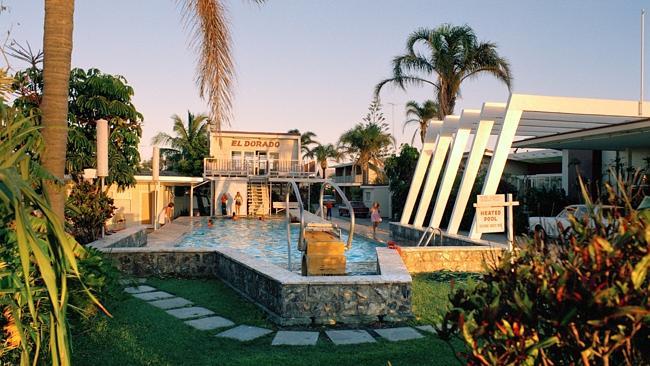
From golden beginnings: El Dorado and Kinkabool
The Gold Coast has earned a reputation as a developer's paradise but in the early 1950s, there was little in the way of a construction industry.
The first Surfers Paradise high rise, Kinkabool, was still four years away when locals Greg Grahman and Bill Reichelt built the city's first motel - the El Dorado.
It was built in 1954 near the Gold Coast Highway on the site now occupied by the Crowne Plaza.
Unlike the sophisticated accommodation now available, the El Dorado had just 12 rooms, flat roofs and was built of materials typical of the post World War II period, including asbestos and cement cladding.
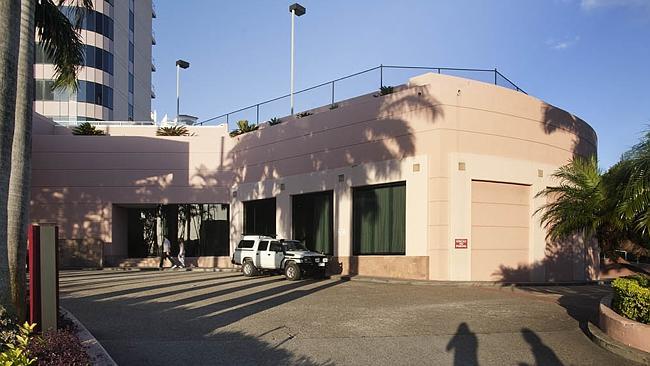
Greg's wife Esma said in the 2010 book Now and Then: A Gold Coast journey from the past to the present that the hotel's design was created by the couple themselves without consulting any architect.
``He wanted to call it El Dorado because he wanted it to be a little gold mine and it was,'' she said.
``It was the first motel to have kitchens and each room was like a little apartment, with car parking at the door.
``In the end there were about 50 units but by then everyone started building them because they could see that they were popular.''
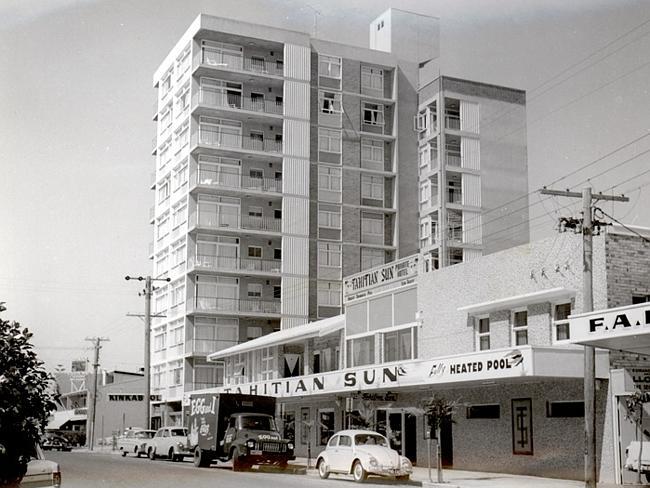
However, all things must pass and the El Dorado was one of many hotels from the Gold Coast's early years to be redeveloped in the 1980s as the city's image shifted towards a more modern appearance.
Few motels from the 1960s were left standing, Kinkabool being a major exception.
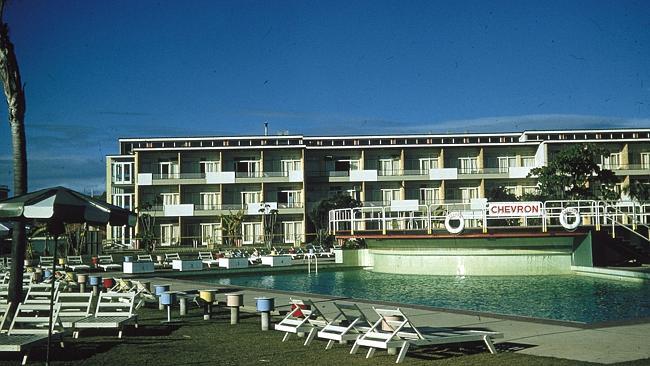
Something of a renaissance: The Chevron Hotel
The Glitter Strip has been the centre of the Gold Coast's social scene for more than 50 years but precious little remains of the hotels from the city's earliest days.
Only Hanlan Street's Kinkabool remains from the Coast's hey-day of the 1950s and 1960s when it grew from a small town.
Among the first and most famous was the Chevron Hotel which was built on property owned by the Cavill family.
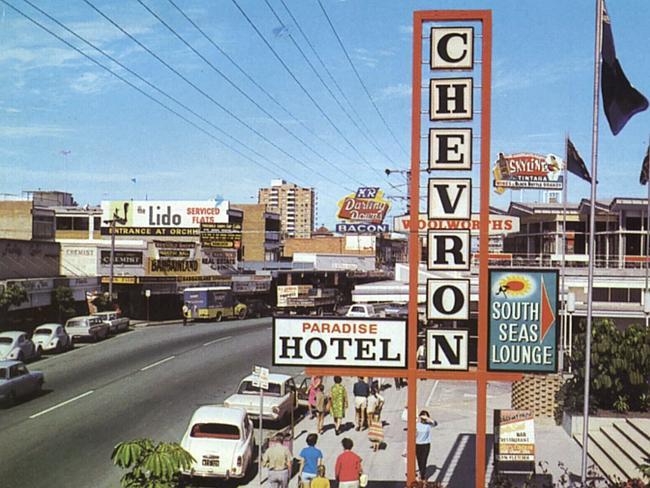
It was the pet project of Polish-born developer Stanley Korman who turned the first sod in early 1957 and opened its first accommodation in June the same year.
By September 1957, a second accommodation wing had opened, as well as the Skyline Bar, one of the era's major entertainment venues, alongside The Playroom and Twin Towns.
In his 1984 book, The Fabulous Gold Coast, historian Alexander McRobbie said the Skyline bar was "something quite new - in effect an indoor beer garden where liquor, meals and coffee were available with entertainment and dancing,'' he wrote.
Just a month after opening, the Cavill family sold the famous Surfers Paradise Hotel to Chevron Queensland Ltd for more than $700,000.
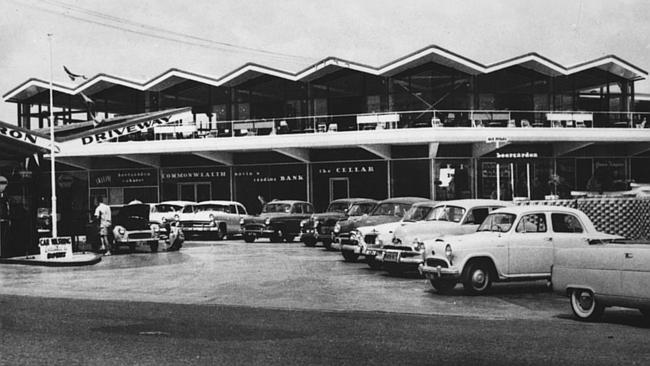
The Paradise Room opened in 1958, followed in September 1960 by the main building in the hotel which featured a convention centre and 24-lane bowling alley.
The Chevron Hotel continued trading until the mid-1980s when it finally closed. It was demolished in 1987.
The site remained empty in the early 1990s and was often the scene of markets and carnivals.
In the late 1990s the land was bought by the Raptis Group which redeveloped it to become the Chevron Renaissance.
